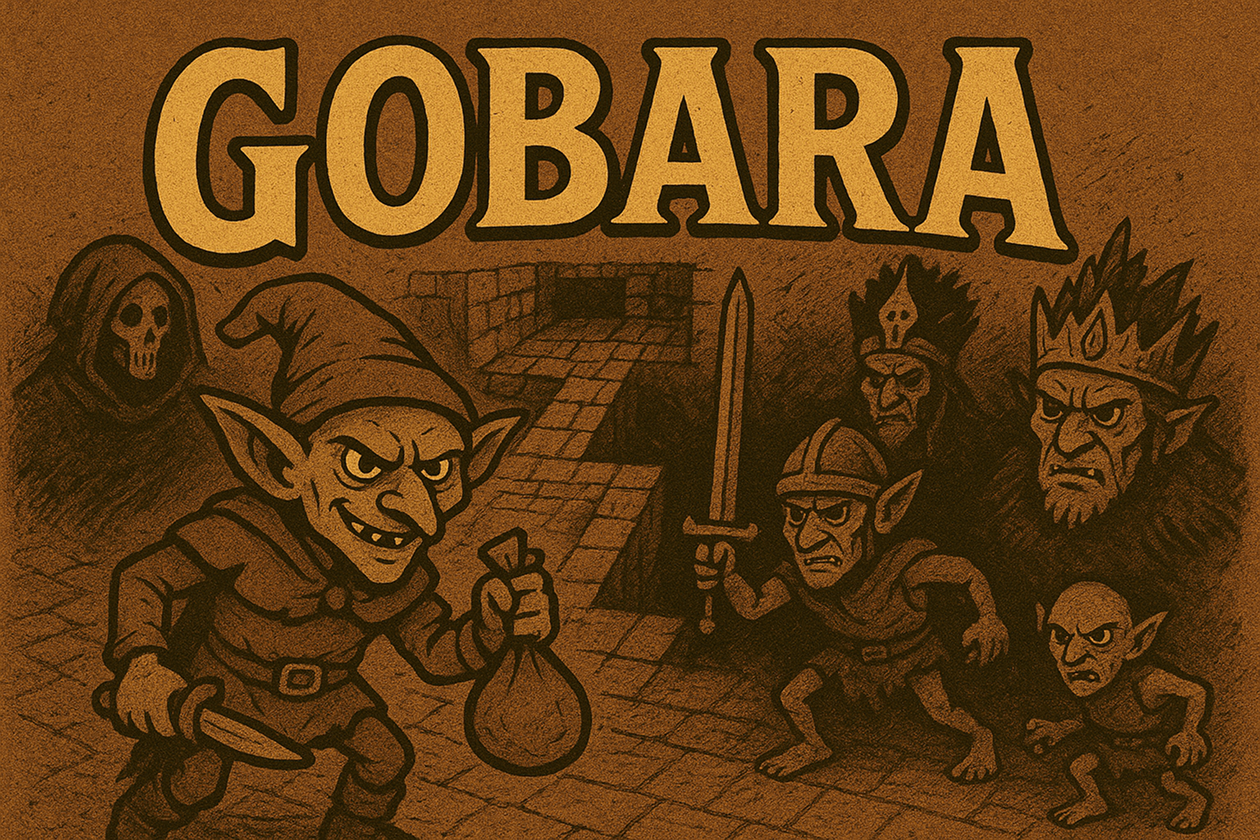How I Recreated My Favorite Board Game in Unity | Gobara Devlog Ep. 2
Hey everyone, it’s FromQCWithGameDev! In this devlog, I want to talk about what I think is the most important part of starting any new project — whether it’s game development or anything else — and that’s planning.
🧭 Why Planning Matters
I’ve learned that I perform way better when I have clear, concrete objectives to work toward. Having a to-do list I can check off each day helps me stay focused and motivated.
In game development, planning means defining your objectives and your end state — knowing exactly what you’re trying to make, how it should play, and what “done” looks like.
For this project, I wanted to be super clear about all of that before jumping into code.
⚙️ Choosing My Tools and Inspiration
Since I’m already comfortable with Unity, I decided to stick with it. One less thing to worry about.
For the concept, I drew inspiration from one of my favorite board games, Karak. It’s a tile-based dungeon-crawling board game that already feels like a video game at its core.
My goal was simple:
-
Recreate the feel and mechanics of Karak
-
Focus on local couch co-op gameplay
-
Maybe add online multiplayer someday down the road
Recreating a board game has one big advantage — the rules already exist! That meant I could focus on implementation instead of game design.
🧩 Prototyping with Figma
Before touching Unity, I jumped into Figma to storyboard and visualize the game flow. It’s a great way to answer two big questions early on:
-
What happens in the game?
-
What do I want it to look like?
Because I was targeting desktop (Mac/Windows), I knew I’d be designing for a horizontal layout, not mobile. That made things simpler.
I started gathering UI inspiration online — menus, buttons, and layouts I liked — then began creating my own versions. I built a main menu first just to warm up and get a feel for Unity’s UI tools.
🔄 Mapping Out Core Gameplay
In Karak, each player takes turns and gets four actions per turn. That gave me my first UI requirement:
-
Clearly show whose turn it is and how many actions remain.
Players move between tiles, exploring as they go. Each new tile reveals something — maybe a room, maybe an enemy, maybe treasure.
That meant I needed a:
-
Tile placement system (players choose how to place new tiles)
-
Tile content generator (decides what’s inside each new tile)
-
Special ability UI for characters who can pick between two tile options
⚔️ Building the Battle System
When a player discovers an enemy, they have to fight it. Battles are resolved by rolling dice, with damage boosted by weapons in your inventory.
So I made a battle UI:
-
A button to roll dice
-
A results screen explaining the outcome (super helpful for debugging and clarity)
Then I added special abilities — like re-rolling dice, chaining turns, or skipping fights — which required extra buttons and logic in the combat UI.
Once that was in place, I made separate screens for winning and losing battles.
💎 Loot, Inventory, and Curses
After a fight, enemies drop loot. Players have limited inventory:
-
2 weapons
-
3 spells
-
1 key
If they find a new weapon, they can choose which old one to replace.
Some enemies even let players curse another player when defeated — so I built a small UI for that too.
The final goal of the game is to defeat the Red Dragon, so I added an end-game screen that triggers when that happens.
🧙♂️ Finishing Up the Core Flow
With all that, I circled back to smaller gameplay details:
-
UI for opening treasures, picking up spells or weapons
-
Target selection for spell casting
-
Handling cases like finding treasure without a key
By this point, I had a full map of what my game’s systems and UI needed to look like — from menus to movement to combat.
Next up? Designing class diagrams and state machines to bring all those pieces to life in code.
🏁 Takeaway
Planning might not be the most glamorous part of game dev, but it’s absolutely essential. Having a clear idea of what I wanted to make — and how each piece fit together — made every next step more manageable.
Even though my UI was rough and simple, this process gave me direction and confidence to start building for real.

Leave a comment
Log in with itch.io to leave a comment.